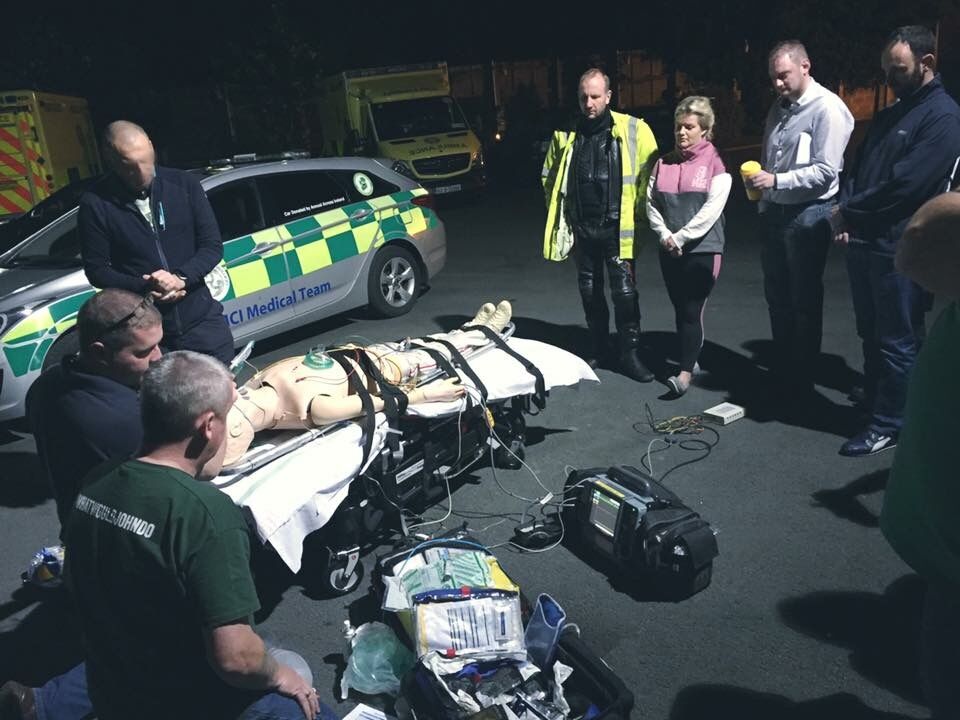
Rescuer safety: evaluation of the scene
Scene evaluation skills for the purpose of self-protection, correct identification of hazards and needs, recognition of the dynamics of the event for the formulation of the suspicion of organ damage
The first impact of a scene is the most important moment and the one where – often – the most important decisions are made
While reaching the scene of the event you must assess the safety status of the scene for you and the people involved: a rescuer should never be in a position to be rescued.
Once you are sure that the situation in which you are operating is safe, you move on to assessing the state of the patient.
Environmental assessment: this is a general impression, it is based on your immediate assessment of the environment, the main disturbance, and the patient’s appearance.
The environment provides information about the patient’s current and previous conditions, and sometimes also allows you to find out what happened.
The main symptom is the reason why you are called; it can be an obvious symptom (e.g. abdominal pain) or a vague symptom (e.g. “not feeling well”) from which you will form a general impression. By looking, listening and smelling, you will try to establish age and sex: you will observe the position taken by the patient to establish whether there are any signs of pain or breathing difficulties.
ARRIVING AT THE SCENE, PRIMARY EVALUATION:
Any life-threatening condition should be treated as soon as it is diagnosed, any action should be preceded by an assessment.
Once the problem has been resolved, you will need to decide on the priority level of immediate transport, or proceed to further assessment. In many cases there is no need for urgent transport to hospital (by siren), or for medical intervention, but in some cases there is a need and you must be able to realise this.
If the patient’s vital functions are compromised, it is necessary to perform the necessary urgent rescue manoeuvres, at the same time alerting the Operations Centre, communicating the situation and waiting for indications on whether to send the ALS or to transport the patient directly to the nearest Accident and Emergency department.
Obviously, the operator at the Operations Centre will base his decision on what you have told him. The assessment should be made very quickly using the ABC (Airways-Breathing-Circulation) scheme, i.e.:
A – IS THE PATIENT CONSCIOUS?
If not, I will alert the Operations Centre and activate advanced rescue.
B – IS THE AIRWAY CLEAR? IS HE BREATHING?
C – IS THERE A HEARTBEAT? IS THERE SIGNIFICANT BLEEDING?
If the patient is alert, speaks clearly or cries, you can deduce that the airway is clear; if it is not clear, you will have to carry out the appropriate manoeuvres to restore and maintain it.
The next step is to assess breathing: if there is breathlessness you will proceed with respiratory resuscitation; if there is respiratory insufficiency you will act accordingly (oxygen therapy).
Finally, the blood circulation will be assessed: you will take a pulse and if absent you will perform CPR, you will also assess the condition of the skin and the extent of any bleeding.
The TSSA course (national course for health transport and ambulance rescue) is the advanced health course of the Italian Red Cross, which aims to train the SOCCORRITORE, i.e. the volunteer who will carry out his activities in an ambulance, and therefore the training course is typically medical.
The courses are held by qualified Red Cross instructors with a specific course.
There are 6 training modules.
The first 4 modules are sufficient to become a rescuer, the other two modules are for in-depth study and completion of regional courses.
Access to this course is compulsory to be an active member of the CRI and therefore to have attended the Basic Course.
The meetings mainly focus on the problems of out-of-hospital rescue and are divided into theoretical and practical parts with particular reference to Traumatology, Cardiopulmonary Resuscitation with the acquisition of the BLS-D (defibrillation) licence and the use of the equipment available on ambulances.
The cooperation that led to the creation of these TSSA handouts is very important.
There is no single, official material for the whole country.
The lesson material we are republishing was created thanks to the cooperation of Red Cross trainers and instructors specialised in PSTI (First Aid and Infirmary Transport).
These instructors have produced the sheets that you can freely consult.
The team is made up of 15 qualified instructors, whose work was checked by 5 reviewers (trainers, specialist doctors and technical experts) who corrected some of the scientific content and then homogenised the visual aspect of the course.
This has resulted in wikiSLIDES which to date have more than 5,000 downloads from the official link.
Read Also:
Emergency Responders On Crime Scenes – 6 Most Common Mistakes


